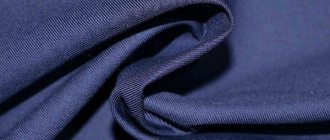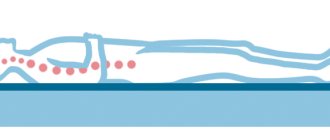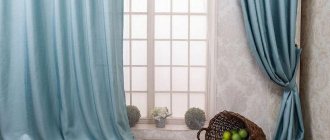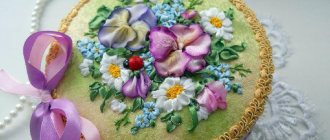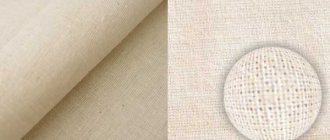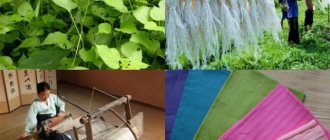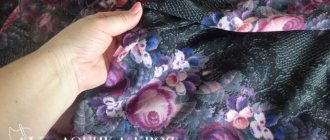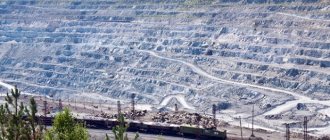What are artificial mineral fibers?
The term IMV is a generic name for a wide range of manufactured fibrous materials. They have a wooly consistency, usually made from molten glass, stone or slag. Individually they may be known as glass wool, stone wool or slag wool according to the materials from which they are made. This term does not include naturally occurring silicate fibers such as asbestos. It also does not include man-made organic fibers such as nylon and rayon.
Read about: identifying fabric for clothing.
There are many different IMVs. Man-made mineral fiber used:
- as thermal and acoustic insulation of buildings and process plants
- for fire protection of buildings
- for pipe insulation
- for highly efficient filtration
- as a replacement for asbestos, the use of which is now prohibited
- IMV is commonly used in insulation boards, heat treatment blankets, electrical insulation, and reinforcement of plastics and cement.
Types of natural fibers
Cotton is the fiber that covers the seeds of cotton plants. Cotton is an annual plant 0.6-0.7 m high, growing in areas with a hot climate. The main substance that cotton fiber consists of (94-96%) is cellulose. Under a microscope, cotton fiber of normal maturity looks like a flat ribbon with a corkscrew crimp and a channel filled with air inside. The length of cotton fibers is from 1 to 55 mm. The longer the fibers, the thinner they are. Long-staple cotton is used to produce thin, even, dense yarn, from which cambric and voile are made. From medium-fiber yarn - chintz, calico, calico, satin, corduroy. From short-fiber yarn - loose, thick, uneven in thickness, fluffy yarn - flannel, fleece, flannel.
Positive properties:
high hygroscopicity (8-12%), increased tensile strength in the wet state (S of the cross section doubles due to strong swelling), high heat resistance (up to 1400 C is not destroyed), resistance to alkalis (used for finishing - mercerization - processing solution of sodium hydroxide after which the fibers become smoother, stronger, shiny, and better colored).
Negative properties:
high creasing (due to low elasticity), high shrinkage, low resistance to acids. Cotton fluff is used in the production of medical cotton wool.
Bast fibers are obtained from the stems, leaves, and shells of fruits of various plants. Stem fibers are flax, hemp, jute, kenaf. Leafy - sisal, fruit coir (from the covering of a coconut shell).
Flax is an annual plant. They exist in two varieties: long flax and curly flax. Flax fibers consist of: 75% cellulose, as well as lignin, wax, etc. The fibers have 4-6 edges. Unlike cotton, it has thicker walls, a narrow channel closed at both ends, a smoother and more even surface (therefore it gets dirty less and is easier to wash). Stronger than cotton, hygroscopic, quickly absorbs and releases moisture, heat resistance up to 1600 C, lignin content makes it resistant to light, weather, microorganisms; resistant to alkalis, unstable to acids; has a natural silky shine, so it is not subjected to mercerization. Low elasticity, easily wrinkles. Difficult to bleach and dye. It is used for the production of linen fabrics, summer suits, and coarser fabrics are produced from flax tow: canvas, tarpaulins, bag canvas.
Hemp is made from the annual hemp plant. The fiber is used to make ropes, cords, packaging and bagging fabrics.
Kenaf, jute - from annual plants of the mallow and linden families. Bag and container fabrics for storing moisture-intensive goods.
Wool is a fiber from the hair of sheep, goats, camels, rabbits, etc. It consists mainly of keratin protein (90%). The outer surface of the fiber is covered with scales. The scaly layer is followed by the cortical layer, on which the properties of the fiber depend. There may also be a medullary layer consisting of loose, air-filled cells. Wool can be of four types: fluff, transitional hair, awn, dead hair. Down is a thin fiber without a core layer. Transitional hair has a small core layer. The spine and dead hair have a large core layer, characterized by great thickness, rigidity, and low strength. Depending on the thickness of the fibers, wool is divided into fine, semi-fine, semi-coarse and coarse. From long fibers (55-120 mm) combed (worsted) yarn is obtained - thin, even, dense, smooth. From short fibers (55 mm) we obtain hardware (cloth) yarn, which is thicker, loose, fluffy, and uneven in thickness. A unique property is high feltability (due to the scaly layer). Thanks to this property, wool is used to produce felt, cloth, felt, blankets, and felted shoes.
Positive properties: heat-protective, elasticity, resistance to acids (cleaning wool with an acid solution is called carbonization), high hygroscopicity (15-17%), but absorbs and releases moisture slowly.
Disadvantages: low heat resistance (at t100-1100 C, the fibers become brittle and stiff); when wet, the strength decreases, and is not resistant to alkalis. Suits, dress fabrics, scarves, etc. are produced from fine and semi-fine wool in its pure form and with admixtures (cotton, viscose, lavsan, nylon). From semi-rough and rough - coat fabrics, felted shoes, felt. Goat down is used for the production of scarves, knitwear, and fabrics. Camel wool - for the production of blankets.
Natural silk is obtained by unwinding the cocoons of silkworm caterpillars. The most valuable is the silk of the silkworm, which accounts for 90% of the world's silk production. The homeland of silk is China, where the silkworm was cultivated 3000 BC.
Cocoon threads are very thin, so they are unwound simultaneously from several cocoons (6-8). Connecting into one complex thread. This thread is called raw silk (total length 1000-1300 m). The sheath (non-unwinding sheath - about 20% of the thread length) is processed into short fibers. Of all natural fibers, silk is the lightest and has the most beautiful appearance. High hygroscopicity (11%).softness, low creasing, high strength (reduces when wet). Resistant to acids, unstable to alkalis, has low heat resistance (100-1100 C). Silk is used to produce dress and blouse fabrics, threads, ribbons, and laces.
Commonly used artificial mineral fiber
Some of the commonly used man-made mineral fibers are:
Fiberglass
Fiberglass is produced by a variety of methods that depend on the end product required (such as solid, mat, or rope). For example, it can be made of mineral wool and used for insulation. Mineral wool can also be increased in density and reinforced to create a pre-formed rigid section to be used as pipe insulation.
The resulting glass has an average diameter of about 4-9 µm, which is within the range of inhaled air. Fiberglass may also contain spherical glass particles. These spherical particles typically have a diameter of 100 µm.
Stone wool
Stone wool is produced by melting a mixture of metallurgical and chemical slag with basalt rock, using similar methods used in the production of fiberglass. The resulting stone wool is used as thermal insulation and sound-absorbing material. It is also highly resistant to temperatures up to 600°C and is independent of water. It is used as thermal insulation in industrial installations, pipes and boilers, etc., and for the construction of insulating walls and roofs. Stone wool is also widely used as a sound-absorbing material for television, radio and drama studios.
Ceramic fiber
Ceramic fibers are made from the same group of aluminosilicates that are used in the ceramics industry and are also known as “Aluminosilicate Ceramic Fibers” and “Refractory Fibers”.
Ceramic fibers have been manufactured and used throughout the world since the 1940s. They are produced at temperatures of 2000°C and the manufactured material can withstand temperatures ranging from 1260°C to 1400°C. The material is also resistant to water and most chemicals and is used to make high-temperature fire-resistant gaskets, thermal insulation coatings, felts, ropes, gaskets and papers.
Natural and synthetic fibers
⇐ PreviousPage 21 of 40Next ⇒
Natural materials
The fibers from which fabrics are made are divided into natural and artificial. There are three types of natural fibers: 1) fibers of plant origin (cotton and flax), 2) fibers of animal origin (wool and silk), 3) fibers of mineral origin (asbestos).
The advantage of materials obtained from natural fibers is their high environmental friendliness. Since these fibers are of natural origin, they are, so to speak, perfectly compatible with the human body, easy to use and hygienic.
Cotton
This fiber is obtained from cotton. When it ripens, the fruits (bolls) spontaneously open, and raw cotton, similar to cotton wool, is collected from them.
India is considered the birthplace of cotton. In any case, cotton growing has been practiced there since the 30th century BC. Cotton plant is widespread in South America, Asia, Australia, and Africa. Almost 70% of cotton is produced in Mexico. Large quantities of cotton are also produced in Peru and Indochina.
The advantage of cotton fabrics is their high hygiene. They allow air to pass through perfectly, allowing the skin to breathe. That is why summer clothes made of cotton are very practical. Cotton is most often used to make children's clothing and underwear, as well as sportswear.
The disadvantage of cotton is that it wrinkles and wears out quite quickly (remember children's cotton tights, socks, etc.). Also, it doesn't hold paint very well (it fades). Therefore, do not forget that cotton in bright or dark colors will retain its beauty only until the first wash. But a dazzling white cotton blouse will delight you with its freshness and elegance for a long time.
The most beautiful and interesting cotton fabrics are produced in India and the countries of Southeast Asia (“gauze”, thin translucent matting, fabrics with a “crinkled” effect, etc.).
Poetic names of Indian cotton
“Flowing water”, “evening fog”, “woven air” - these were the names of the fabrics created in India. And they fully corresponded to these names. These fabrics were so thin and transparent that Indian women wore their jewelry under their clothes! Many Indian fabrics have remained in history under the names of the cities and villages where they were produced, for example, madras, madapolam, etc.
Linen
Flax fiber is obtained from fiber flax. Its homeland is Egypt. The fertile soil of the Nile Valley contributed to the cultivation of this plant. Ancient Egyptian spinners and weavers achieved such mastery in their craft that they were able to create the finest fabric from flax, barely visible to the eye.
Flax fiber is obtained as follows: flax stalks are pulled, flower heads are separated from the stems, and then the combed straw is spread on the field or tied into sheaves. Now all these operations are performed using a combine harvester. Currently, the largest areas sown with fiber flax are in European countries (including Russia), as well as in Egypt and Turkey.
Linen, like cotton, has high hygroscopic properties. Flax fiber is more durable than cotton fiber, so it is often used to make bed linen, towels, etc. In addition, linen has the ability to cool body temperature, making it indispensable for summer clothing.
Flax fiber holds its shape very well. Currently, it is often mixed with synthetic, and elegant women's and men's summer suits, jackets, trousers, etc. are sewn from the resulting fabrics.
Term you need to know
“Hygroscopicity” is the ability of materials or substances to absorb moisture from the environment (usually referring to water vapor). Hygroscopic fabrics are those that absorb skin secretions well and, therefore, are hygienic for humans.
Silk
Silk fiber is produced by silkworm butterflies that live on the mulberry tree (also called the mulberry tree) and feed on its leaves. These butterflies, while at the caterpillar stage, secrete from their glands the fiber they need for pupation. This delicate, soft fiber is silk.
Raw silk is obtained by unwinding several cocoons together. It is then used to produce spun silk, which is used in knitting and sewing thread. Waste raw silk is processed into yarn. Subsequently, crepe de Chine, parachute silk, etc. are made from this yarn.
China is considered the birthplace of silk, where sericulture has been practiced since the 30th century BC. In ancient China, it was believed that rubbing silk against the skin helped cure many diseases. The Chinese strictly kept the secret of silk production. Until the 16th century, silk fabrics were brought from China to Western Asian countries along the so-called Great Silk Road. Currently, sericulture is most developed in China, Japan, India, Turkey, Italy and Brazil.
The best silk is still produced in China. It is thin, smooth, pleasant to the touch, has a soft rustle and a beautiful shine. By the way, the French word “crepe de Chine” means “Chinese crepe”.
Natural silk has excellent hygienic properties. It is breathable and perfectly absorbs moisture. In summer it pleasantly cools the skin, so it is indispensable for making summer clothes. The disadvantages of natural silk are, firstly, that it wrinkles quite a lot, and, secondly, that unsightly stains appear on it due to moisture (for example, as a result of sweat or rain). In addition, natural silk shrinks very much after washing. Therefore, it is recommended to decate it before sewing (wet and dry it) or not to wash finished items, but to dry clean them.
Term you need to know
“Decating” is the treatment of certain types of fabrics with steam or hot water to prevent shrinkage in the finished product and improve quality (for example, to make the fabric more soft).
Wool
Wool yarn is produced from the wool of animals: sheep, goats, camels, etc. The most valuable raw material is obtained from fluff (undercoat), which produces thin, soft, crimped wool fiber.
The bulk of industrial wool is sheep. Sheep farming is most developed in Australia, New Zealand and Argentina. Camels (and goats of those breeds that produce the most valuable wool fiber) are bred mainly in Africa and Asia, in deserts, semi-deserts and dry steppes. Camel wool is used to make beautiful rugs and blankets, as well as elegant capes and coats.
The advantages of wool include its excellent thermal insulation properties, which is why woolen materials are used mainly for winter clothing. The disadvantage of wool is that it wrinkles and wears out quite quickly (remember how quickly the cuffs of pure wool suits and coats wear out).
Currently, the best woolen fabrics are produced in England. Things made from pure wool look very noble and elegant. But nowadays, for reasons of practicality, wool fibers are most often mixed with synthetic ones.
Artificial materials
Fibers that do not belong to the natural world are divided into artificial and synthetic. Man-made fibers are obtained from chemical processing products of natural polymers (for example, proteins, nucleic acids, rubber). Synthetic fibers are obtained from polymers that are not found in nature, that is, chemically synthesized.
Synthetic fibers began to be produced only in the 20th century. The production of synthetic fibers involves pressing a solution or melt of any polymer through tiny holes into a medium that causes rapid hardening of the resulting thin fibers.
Synthetic fibers have quickly gained popularity around the world due to the speed and cheapness of their production, as well as the fact that they save natural resources.
Terms you need to know
“Synthesis” is the combination of different elements into a single whole. Chemical synthesis is the targeted production of various products using chemical reactions.
Viscose
Viscose fabrics are usually classified as natural. However, in essence, they are not. Viscose is a fiber obtained artificially from cellulose. But cellulose is the main component of plant cell walls, which means it is of natural origin. Cellulose is found, in particular, in stem wood, as well as in cotton bolls and bast fibers. The production of viscose is considered profitable due to the availability of raw materials.
The undoubted advantages of viscose fiber include the fact that it perfectly absorbs moisture, is easy to dye and irons well. Viscose is very good for making summer clothes.
The disadvantage of viscose is that it wears out quite quickly, wrinkles, and, moreover, easily tears when wet (which is especially inconvenient when washing). Currently, these shortcomings are partially eliminated by producing so-called modified viscose.
Term you need to know
“Weaving” is the production of fabric on a loom, manual or mechanical. The handloom is one of the oldest human inventions. Similar machines, for example, can still be seen in remote villages in Russia. The power loom was invented in the second half of the 18th century.
Acetate
Acetate is a man-made fiber formed from cellulose. Acetate is not synthetic, since it is produced, although artificially, from natural raw materials.
The advantages of acetate fiber are, first of all, its elasticity and softness. It wrinkles little and transmits ultraviolet rays well. The disadvantages of acetate are the following properties: it is fragile, wears out quickly, and is unstable to high temperatures (for example, it is quite deformed in hot water and when ironing). In addition, acetate is quite electrified.
Acetate is used mainly in the production of underwear, mainly women's. Currently, to improve the quality of products, acetate is most often mixed with synthetic or natural fibers.
Term you need to know
“Deformation” is a change in the relative position of the points of an object that occurs as a result of external influences, in which the distance between them changes. Deformation is called elastic if it disappears after the cessation of external influence, and plastic if it does not completely disappear.
Polyester
Polyester is one of the most common synthetic fibers today. Its advantages include, firstly, very high strength (it actually does not wear out). Secondly, polyester practically does not wrinkle (or instantly recovers after creasing). It does not lose its qualities in light or under the influence of various weather conditions; it is also resistant to organic solvents.
The disadvantages of polyester are: insufficient breathability, fairly strong electrification and some rigidity. Currently, these shortcomings are partially eliminated by modification. It should be noted that new generation synthetic fibers have better hygienic qualities than before. They are softer to the touch, allow air to pass through better and are less electrified.
However, polyester items are not very suitable for hot weather. You shouldn’t take them with you to warm resorts; they most likely won’t be useful there. In summer, things made of polyester should only be worn if they have slits, a neckline, etc., i.e. They allow air to pass through well.
Polyester, like most synthetic fabrics, cannot be ironed with a very hot iron. However, things made from polyester practically do not require ironing. After washing, it is enough to straighten them, shake them well and dry them (best of all, on hangers).
Terms you need to know
“Warp” are threads running parallel to each other along the fabric. During the weaving process, the warp threads are intertwined with the weft threads located perpendicular to them.
“Weft” is the transverse threads of the fabric intertwined with the warp threads during the weaving process.
Acrylic
Acrylic (polyacrylonitrile) is a synthetic fiber that is similar to wool in many properties. On the labels of things, acrylic is sometimes designated by the abbreviation PAN (after the first letters of the word “poly-acrylic-nitrile”).
Acrylic is resistant to light and various weather conditions. It withstands the effects of acids, weak alkalis and other organic solvents. Simply put, it tolerates dry cleaning well.
The advantages of acrylic are its lightness, softness, and visual similarity to wool. Its disadvantages: firstly, it is quite electrified, secondly, it often stretches when washed, and thirdly, it tends to become covered with “pellets”. Acrylic should not be exposed to high temperatures. It should be washed in water at room temperature and ironed with a low-heat iron. It is better not to wash things made of acrylic, but to dry clean them, then they will last longer.
Acrylic is used mainly to make outerwear and underwear, as well as scarves, carpets and fabrics. Acrylic is often mixed with natural or other synthetic fibers for practical reasons.
On a note
Sometimes when buying a jumper, sweater or jacket, despite the information indicated on the label, it can be difficult to accurately determine whether the item is knitted from acrylic or natural wool. The following technique can help with this: to determine whether it is wool or acrylic, you need to (sorry!) smell the item you are about to purchase. Natural wool always has a more or less perceptible “animal” smell inherent in natural fiber. Acrylic does not have such a smell.
Polyamide
Polyamide is a synthetic fiber. Previously, it was called nylon, nylon or perlon.
Polyamide is extremely durable and elastic. It is very resistant to a variety of chemicals, so it is often used to make clothing designed to work in aggressive environments.
The significant disadvantages of polyamide are the following: it almost does not absorb moisture, is highly electrified, and loses its strength in bright light or extreme heat. Polyamide, like all synthetic materials, cannot be exposed to high temperatures.
Currently, polyamide in its pure form is practically not used for the manufacture of fabrics. It is almost always mixed in certain proportions with other fibers to achieve better consumer properties.
From recent history
In the early fifties of the 20th century, nylon stockings appeared and immediately became extremely fashionable. Until this time, women wore fildecos or plated stockings (there were no tights at that time). Nylon stockings were transparent, tight, and beautifully hugged the leg; they instantly became the object of dreams of every young woman. At first they were not available in stores; they were brought from abroad.
Women took great care of these stockings, and if the loops came down on them, they took them to special ateliers for repairs. Moreover, stores sold special devices for lifting dropped loops, and this gave many craftsmen the opportunity to earn extra money by taking orders from friends to repair stockings.
Polyurethane
Polyurethane (spandex, lycra) is a synthetic fiber with mechanical properties similar to rubber threads.
Polyurethane is more resistant to sebum and sweat, as well as organic solvents, more than other synthetic fibers. The disadvantages of polyurethane include the fact that it practically does not absorb water and is very poorly breathable. In addition, polyurethane loses its strength in bright light and when exposed to high temperatures. Therefore, items with a high content of spandex or lycra are not suitable for hot and sunny summer weather.
Polyurethane is used mainly in the production of hosiery and corsetry (tights, girdles, cinches, bras, etc.), as well as sportswear. In addition, polyurethane fibers (since they are similar to rubber threads) are often added to knitted fabrics to give them greater elasticity.
Term you need to know
“Elasticity” is the ability of a material to experience elastic (disappearing after the cessation of external influence) deformation. One of the most elastic materials is rubber.
Assortment of fabrics
Thin fabrics
The main types of fine fabrics currently used include cambric, voile, voile, chiffon, georgette, crepe de Chine and organza. Some of these fabrics are now produced not only from natural, but also from artificial fibers. For example, crepe de Chine, georgette and chiffon are now made not only from natural silk, but much more often from polyester, preserving the surface character and appearance inherent in these fabrics.
Batiste
Very thin, translucent linen (less often cotton) fabric with a plain weave. Its homeland, as well as most light fabrics, is India. The batiste lays down in airy, soft folds. Currently, it is used mainly for making blouses, as well as dressy and summer clothes.
Batiste washes and irons perfectly. It, like all natural fabrics, wrinkles, but the folds that form in this case look natural and do not spoil the appearance of the item. The most elegant is white cambric.
In order to figuratively imagine what cambric looks like, it is enough to remember the era of the musketeers. At that time, men wore snow-white cambric shirts, richly decorated with lace. One can also recall the light, airy dresses of women of Chekhov's time, sewn from white cambric and decorated with numerous ruffles and frills.
Term you need to know
“Kumach” is a fabric, mainly cotton, dyed in a bright red, crimson color. It is interesting that the name “kumach”, which seems originally Russian, originates from the Turkic group of languages.
Marquisette
Marquisette is a light, thin, almost transparent, predominantly cotton fabric made from very fine, twisted yarn. Unfortunately, at present the domestic industry produces quite a bit of awnings.
The awning drapes perfectly, it allows air to pass through well, and is easy to wash and iron. This fabric is great for sewing blouses and summer clothes. To visually imagine a voile, it is enough to recall the unusually feminine dresses of the 30s with elongated flared skirts, puff sleeves and bow-tied collars.
Term you need to know
“Spindle” is a device for hand or machine spinning. In hand spinning, the spindle is a vertical rotating rod for winding yarn, roving or thread. In machine spinning, a bobbin, bobbin, etc. is put on the spindle.
Veil
A veil is a sparsely woven, almost transparent, predominantly cotton (rarely silk or wool) fabric. The veil has a plain weave and looks like thick gauze. The name of this fabric comes from a large veil that was part of a woman's costume and was designed to cover the woman's face and body. A similar veil in Eastern countries is called “veil” or “burqa”.
Items made from a veil should be washed carefully, without subjecting them to heavy mechanical stress (due to the sparse weave). The veil irons perfectly, allows air to pass through perfectly, and is indispensable for the summer.
Chintz
Chintz is a thin, lightweight plain-weave cotton fabric, most often with a variegated printed pattern. From time immemorial, chintz with bright floral patterns has been used for sewing Russian folk clothing: sundresses, shirts, men's blouses, etc.
The disadvantages of chintz are its low strength, as well as its poor color fastness (chintz items often fade and fade in the sun). Currently, these disadvantages of chintz are partially eliminated by finishing.
The main advantages of this fabric are its lightness, breathability, and relative cheapness. Chintz washes well, dries quickly and is easy to iron. Calico items are indispensable for summer, especially for children's clothing.
An example of successful use of chintz: an open sundress made of white chintz with a pattern of large red polka dots.
Term you need to know
“Finishing” is the final processing of the material, namely, the impregnation of textile materials or the application of various substances called finishing agents (starch, glue, synthetic resins, etc.) to them. Finishing agents give fabrics shine, greater rigidity, wrinkle resistance, shrinkage, fire resistance and other necessary properties.
Chiffon
Thin transparent cotton or silk fabric of plain weave with increased density. Thanks to this, the fabric has more weight, and this, in turn, allows it to form beautiful, flexible folds. Chiffon was extremely popular during the Art Nouveau era. Refined, refined ladies of that time wore chiffon blouses with very fluffy, gathered sleeves, fastened to high narrow cuffs with small tight buttons.
Currently, chiffon is made primarily from synthetic fiber. This fabric does not wrinkle, it is great for making elegant, elegant blouses, decorated with numerous flounces and ruffles. Loose skirts or trousers with many pleats, made of patterned chiffon with a thin lining, also look beautiful.
Georgette
Georgette (also called “crepe georgette”) is a thin, translucent silk crepe with a matte, slightly grainy texture. Georgette is elastic, it drapes beautifully, forming graceful, soft tails. This fabric looks noble and elegant and has been extremely popular in recent years. Not only blouses, skirts and dresses are made from it, but also suits and even summer coats.
An example of the effective use of georgette: a little black dress, fashionable in the NEP era, with drapery and a deep neckline on the back, exquisitely decorated with black bugles.
Term you need to know
“Crepe” is a silk, cotton or wool fabric with a slightly rough surface formed due to wavy bent fibers.
Crepe de Chine
Thin silk with a matte, grainy, slightly rough surface. Crepe de Chine is similar in appearance to georgette, but, unlike it, it is opaque. Crepe de Chine drapes beautifully, forming flexible soft folds. This fabric looks unusually noble, it gives things a special femininity. The crêpe de Chine texture is currently extremely popular. This fabric is great for blouses, dressy and summer clothes.
An example of an impressive use of this fabric: an evening trouser suit in dark blue crepe de Chine, trimmed in tone-on-tone satin.
Term you need to know
“Faydeshin”, “fai” is a thin but dense silk fabric with very small transverse scars, which are formed as a result of the fact that the weft thread is thicker and denser than the warp thread.
Lace fabric
Lace fabric is a complex pattern (usually a floral pattern) woven on a transparent mesh base. Nowadays, lace is produced mainly by machine from cotton, and more often synthetic or mixed fiber that imitates silk yarn.
Lace fabric is used mainly for making elegant lingerie, as well as for creating models of weekend wear (blouses, dresses, wedding dresses, etc.). In addition, lace is often used as decoration.
Lace is an extremely impressive material. Its undoubted advantage is that, perhaps more than any other fabric, it emphasizes femininity and gives the appearance a special charm and seductiveness. Heavy convex lace (“alencon”) is used to create tight-fitting models that emphasize the figure, and thin, airy (“chantilly”) is used for dresses with frills, wide skirts and puffy sleeves.
The disadvantages of lace include the following. Firstly, it must be ironed extremely carefully so as not to damage the mesh base (synthetic lace cannot be ironed with a hot iron at all). Secondly, lace tends to form “hooks” that are pulled out of the threads of the pattern, so items made from it require careful use.
An example of the use of this material: an ankle-length vest made of black guipure, worn over trousers and a top made of elastic satin.
A little history
The art of lace making received its main development in the 17th century. At that time, the passion for lace was widespread; it was used not only in secular, but also in church clothing. The main centers for the production of lace were then Venice and Brussels. In the 19th century, machine production of lace appeared. From this period, lace, which until that time was a luxury item, turned into a common addition to clothing, especially underwear.
Organza
Organza is a thin, stiff, transparent silk fabric made with finely patterned weave. Organza has a matte texture; in appearance it somewhat resembles a thin, transparent, slightly shiny layer of ice. However, organza comes not only in white, but also in other colors.
Organza is most often used to make collars, cuffs and other trim. Due to its transparency and rigidity, this fabric is used exclusively for elegant, weekend wear.
As an example of the effective use of this fabric, we can offer the following: a strict black dress, decorated with organza trim - a collar and large “masculine” cuffs with cufflinks.
Fifties crinoline
In the late fifties and early sixties of the 20th century, youth dresses with very fluffy, protruding skirts came into fashion. For such a dress, which, by the way, is incredibly feminine, a multi-layered petticoat with flounces was required. There were different versions of such skirts. Usually women sewed them from calico or cambric and heavily starched them. The pride of the lucky women was the chic petticoats made of nylon or organza, brought from abroad.
Medium thickness fabrics
Most often, medium-thick fabrics are used to make clothes. This applies not only to everyday, but also to elegant things. Even some types of outerwear, such as raincoats and jackets, are made from medium-thick fabrics. The range of this type of fabric is very wide. The most common ones are listed below.
Canvas
Linen is linen, cotton, silk or wool fabric made from warp and weft threads of the same thickness and density. The canvas has moderate softness, it holds its shape well and wrinkles little (in any case, the folds formed in this case do not spoil the appearance of the item). The heroes of Chekhov's plays “The Cherry Orchard”, “The Seagull” and others sported linen suits.
Currently, mainly men's shirts are sewn from cotton fabric. Linen and silk fabric are perfect for making elegant women's and men's summer suits. Woolen fabric is used for sewing light, comfortable business suits.
Teak
This fabric is intended for down and feather products (feather pillowcases, etc.), so it has an extremely tight weave.
Teak has a smooth surface, matte or with a sheen. It is most often painted in light colors. Teak washes and irons well. The disadvantage of teak is that due to the high density of this fabric, the needle has difficulty passing through it, producing poor quality stitching with skipped stitches.
Teak is sometimes used for sporty or safari style sewing. A good example of the use of this fabric: a sports dress with a through fastener, made of sand-colored teak, decorated with numerous pockets with folds and flaps, as well as yokes and shoulder straps.
Poplin
Poplin is a cotton or silk fabric with small transverse ribs on a slightly shiny surface. Poplin is used for sewing men's shirts, women's blouses and summer clothes. Poplin is very practical, it washes and irons well, and is easy to care for. In recent years, poplin, along with raincoat fabrics, has been used to make insulated, quilted jackets.
Flannel
A soft, double-brushed cotton or wool fabric with a plain or diagonal weave. Flannel (both cotton and wool) is a warm fabric, so it is used primarily for making winter clothing. The best quality classic wool flannel is made in the UK.
An example of refined elegance are men's suits or trousers made of gray flannel.
Term you need to know
“Bumazeya” is a soft, predominantly cotton fabric with a brushed back side. Fiberglass is used mainly to make children's clothing. It is interesting that the name “bumazeya”, so familiar to the Russian ear, originates from the Italian word “bambagia” (cotton). By the way, the word “paper” also comes from it.
Crepe
Crepe is a cotton, silk or wool fabric with a fine grain texture. This texture is achieved by deforming the fibers of the fabric, which become similar to finely curly hair.
The crepe is quite soft to the touch, it drapes well, forming plastic folds. But at the same time, it keeps its shape well. Crepe is best suited for making items where it is necessary to emphasize smooth, soft, feminine lines.
Term you need to know
“Drapery” is a series of soft, unironed folds in the fabric.
Cashmere
Cashmere is native to India (the name of this fabric comes from the Indian province of Kashmir). Initially, cashmere was an extremely soft fabric woven from the finest, most delicate down of Tibetan goats.
Currently, cashmere can be either thin (just remember the Pavlov Posad shawls made of printed cashmere), or quite dense, and even coat-like. However, the main distinguishing feature of this fabric has remained unchanged - its exceptional softness.
Currently, natural pure cashmere (made from down fibers) is most often used for sewing luxurious, expensive coats. Scarves are also made from it. Speaking about the properties of cashmere, it should be noted that, like most pure wool materials, pellets often form on it. Therefore, to avoid pilling, cashmere items should not be exposed to high temperatures (for example, washed).
Term you need to know
“Heeled paper (stuffing)” is a type of decorative and applied art. Printing is the manual or machine printing of a colored pattern on fabric, paper, cardboard using relief printing forms (wooden boards or copper plates). In addition, printed material is sometimes called fabric created in this way.
Gozhka
Matting is a cotton, linen, silk or wool fabric with a rare plain weave. The warp and weft threads in this fabric are intertwined in pairs, due to which a convex checkerboard pattern is formed on the surface. The matting is elastic, it wrinkles little, holds its shape perfectly, and is not too difficult to care for. It is used in bleached or plain-dyed form for summer suits, hats, bags, shoes, etc.
The matting was glorified by the legendary Coco Chanel, the famous French fashion designer. She created amazingly elegant and incredibly feminine costumes from it, richly decorated with decorative braid, “golden” buttons, chains and beads.
Canvas
Canvas is made from gray or bleached thick linen yarn. It has a non-smooth, granular texture, with villi and clearly defined nodules. Canvas is one of the oldest types of fabric. It can be both rarer and denser. Canvas is used to make eco-friendly clothing, most often for bags, shoes, hats, etc. Thick canvas is also used by artists to create paintings.
Terms you need to know
“Gray yarn” is an undyed yarn consisting of fibers of natural, natural color.
“Toil” is a fabric made from short cotton (linen, wool) fibers obtained by carding fibrous raw materials. These fibers are usually heavily contaminated with impurities, so the fabric obtained from them has an uneven structure (nodules, villi, etc.).
Raincoat fabrics
The phrase “raincoat fabrics” means fairly thin but dense waterproof materials. They are made from cotton or synthetic fibers with the addition of a certain amount of polyurethane fiber. Raincoats are also called fabrics with a water-repellent film or varnish coating.
Due to the fact that raincoat fabrics contain synthetic raw materials of special quality, it is not recommended to expose them to high temperatures, for example, wash them in hot water or iron them with a very hot iron. Fabrics with varnish and film coating are generally not recommended to be washed and, especially, ironed. It is better to dry clean them.
Raincoat fabrics, in addition to their direct purpose, are also used for the manufacture of youth clothing in sports and paramilitary style, as well as safari style (for example, trousers, jackets, bags, hats, etc.).
Atlas
Satin is a thick, soft silk (less often cotton) fabric with a smooth, shiny outer surface. The fabric shines due to the special satin weave of the fibers. To imagine the picturesque beauty of the atlas, it is enough to recall the outfits of oriental harem beauties.
⇐ Previous21Next ⇒
Recommended pages:
Use the site search:
Types of artificial mineral fibers
- Fiberglass
- Reinforced plastics and cements
- Glass insulation
- Mineral wool
- Thermal insulation made of mineral wool
- Ceramic fibers
- High temperature insulation
- Power plants
- Trinity furnace
- Refrigerated gas turbines
- Fireproof fibers, Silicon nitride/carbide
- Limited Special Use
- Specially designed ultra-fine fibers
- Production of special papers
© 2021 textiletrend.ru
